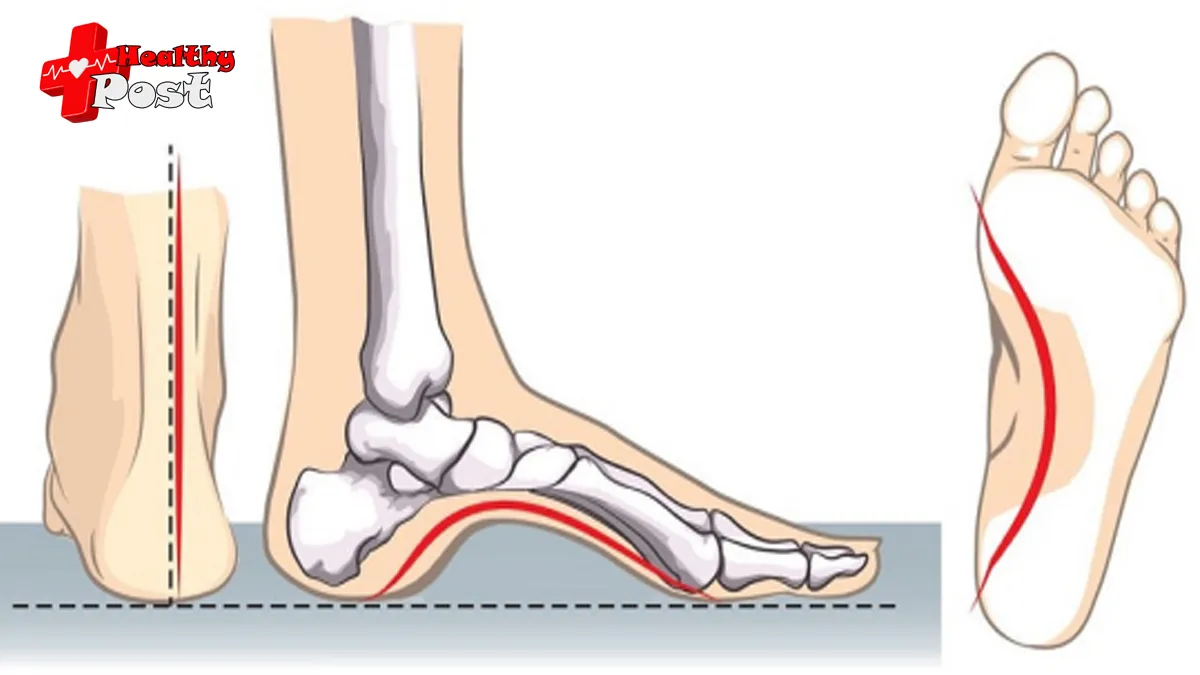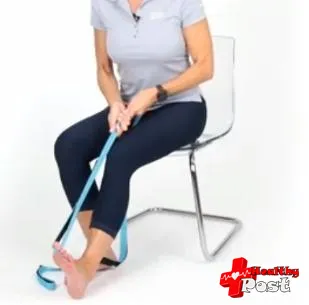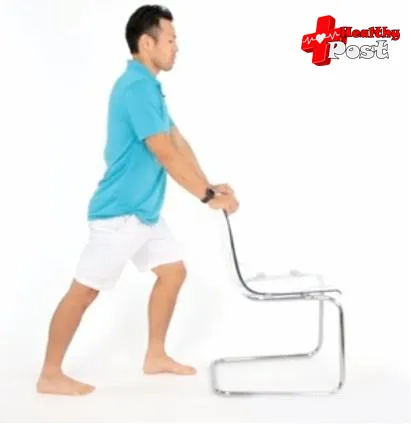
You can avoid flat feet, but you can’t avoid high arches! These few moves will teach you how to improve high arches
Get one-on-one rehabilitation and high arches guidance at the end of the article. Let’s know more.
What are high arches ?
High arches are exactly what they sound like. The arch is so pronounced that your feet don’t touch the ground when you stand evenly. This puts added pressure on the ball of your foot and your heel. You may have heard of high arches being referred to as “pes cavus,” which means “hollow foot” in Latin. If you take the wet footprint test, you’ll understand why. Your wet footprint is just your heel and the ball of your foot; the midfoot won’t leave any mark.
Causes of high arches
While most people with high arches are born with them, some develop them over time. If you develop high arches later in life, or if only one arch is elevated, it’s time to see a doctor, as it could be a symptom of a neurological condition.
There are two main causes of high arches: · Natural orthopedic shape/genetics – When you have high arches, they are a result of genetics. 68% of women and 20% of men have inherited high arches. · Neuromuscular and nervous system – When your high arches are caused by a condition such as muscular dystrophy or Parkinson’s disease. High arches caused by neuromuscular or nervous system conditions tend to be rigid and inflexible.
The dangers of high arches
High arches can eventually lead to pain in various parts of your body. That’s because high arches put extra pressure on the metatarsal bones, or midfoot bones, because your weight is concentrated on the ball of your foot. This can mean foot pain when standing, walking, or running, which can radiate to your ankles, knees, hips, and back over time.
In addition to physical pain, high arches can cause other problems, including: Corns and calluses on the ball, side of the foot, or heel Hammer toes Inflexible and stiff arches Tightened lower calf muscles
If you have high arches, you are more likely to under-supinate or under-pronate . As a supinator, your arches don’t absorb the shock of walking/running very well, and your feet don’t roll inwards enough when you land. In fact, the inward motion of a supinated foot is less than 15%, which means that most of your weight falls on the outer edge of each foot. The wear pattern on the soles of your shoes can hint at this.
While high arches don’t usually cause arch pain , supination can put excessive stress on the joints and muscles of the foot, ankle, and leg, which can cause pain. Problems associated with supination include: · Iliotibial (IT) band pain · Knee pain · Achilles tendonitis · Plantar fasciitis
Severe supinators predispose to injuries such as inversion ankle sprains, heel spurs, and stress fractures. Although supination and high arches are not the same thing, supination is a common biomechanical irregularity in people with high arches.
All of the different problems that high arches can cause can be overwhelming, but there are some simple things you can do to avoid them.
How to improve high arches
1. Seated Plantar Fascia Stretch
Plantar fascia (thick ligament at the bottom of the foot) pain is one of the most common causes of arch pain. There is a way to stretch this area that can give you great relief. The key to stretching the plantar fascia is to engage your toes. · Take a resistance band, towel, or belt and wrap it around the base of your toes near the ball of your foot · Alternatively, you can wrap the band around your big toe for a deeper stretch. · Lift your foot off the ground while keeping your knee relatively straight ·

Pull the end of the band with your hands to pull your toes back toward your shin · Continue pulling until you feel a stretch in the bottom of your foot, you may also feel a stretch in your calf · Note: your toes should also be stretched back toward your shin · Hold for 30 seconds or more on each foot 2-3 sets
If you have trouble coordinating this movement, you can rest your feet on your knees and use your hands to gently stretch your toes and ankles back.
2. Seated Ankle Pumps
This simple exercise is great for getting your foot and ankle loose and moving. Especially for plantar fasciitis, doing this before getting out of bed in the morning can reduce the common first step pain. · Sit on the edge of your bed with your feet flat on the floor · Lift your foot toward your shin, as high as you can while keeping your heel on the ground · Hold for up to 2 seconds, then bring your toes back to the ground · Now, switch directions, with your heel off the ground and your toes remaining on the ground · Hold again for up to 2 seconds before returning to the starting position · Repeat 10-15 times for a total of 2-3 sets
3. Standing Calf Stretch
A general calf stretch always feels good when the foot and/or heel are sore. This is because they tend to get tight due to pain, swelling, or any changes in the way we walk or stand. You can always add a powerful stretch in the sole of the foot when you let the toes stretch, which is a win-win. · Stand near a chair or wall for balance · Get into a lunge position with the foot you want to stretch behind you · Make sure both feet are pointing straight forward and flat on the floor ·

Keep your back knee straight as you shift your weight to your front knee and bend it · Keep moving until you feel a stretch in the back of your calf · Make sure your heel does not lift off the ground (unless you want to stretch your toes to stretch your plantar fascia) · Hold for 30 seconds+ on each leg 2-3 sets
4. Calf Stretcher
Using a calf stretcher can help you achieve similar results and get a deep stretch in the foot, back of the calf, and even into the hamstrings. Rock back and forth gently to feel the stretch, but be sure to use a standing support for balance or try a seated stretch.
5. Posterior Tibial Stretch
The posterior tibialis muscle can be a cause of arch pain due to its role in supporting the arch of the foot. Try this stretch to keep the muscle loose.
6. Resistant Plantar Flexion
Balanced strength in the calf is essential for addressing foot pain. This exercise targets the calf muscles and deeper ankle muscles that help control the arch, such as the tibialis posterior. · Grab a medium-strength resistance band and sit in a chair · Loop the band around the ball of your foot, holding the ends with both hands · Lift your entire foot off the ground, with your knee relatively straight, and push your midfoot down into the band as if you were stepping on the gas · Move as far as you can, pointing with your toes as far as you can · Hold for 1-2 seconds, then slowly (and with control) return to the starting position · Repeat 10-15 times for 2-3 sets
When this exercise becomes too easy, you can increase the number of repetitions or the resistance. Then, when you feel comfortable and have enough ankle control, you can also try standing heel raises.
7. Toe Curls
This is one of many options for strengthening the small muscles in the foot that naturally provide arch support. These muscles can be difficult to coordinate at first, so start slowly and focus on good form and not cramping. · Sit in a chair with a hand towel flat on the floor and under your feet · Lift your toes up toward the ceiling and then back forward · Place your toes on the towel and rub them back, trying to get the front of the towel closer to you ·
Repeat this move continuously for up to 15 repetitions, or until the front of the towel is under your toes · Make sure both heels are touching the ground, unless adjusting the towel as needed · Continue for 2-3 sets total Other options for addressing toe strength and arch issues include picking up marbles, walking in the sand, and drawing the alphabet with your toes.
8. Toe Curls
This exercise is similar to the ankle pump, but uses the toes. The goal again is to promote circulation, toe range of motion, and overall strength. It’s also a great exercise to complete in the morning before getting out of bed. · Sit in bed or on the floor for a long time · Allow your foot to relax in a neutral position with your toes pointing toward the ceiling · Pull your toes back as far as you can comfortably (extend) and hold for 1-2 seconds · Return your toes to the starting position · Then, flex (curl) your toes as far as you can and hold again for 1-2 seconds · Repeat 10-15 times for 2-3 sets · Always keep your ankle neutral and focus only on the toe movement
9. Self-Relaxation of Foot Muscles
It is always a good idea to relax your foot before or after stretching and strengthening exercises. It warms up the area, promotes blood flow, and reduces the risk of pain later on. There are several simple ways to relax your arch. ① Use your hands · To relax your arch without tools, simply sit in a chair and place your foot on the opposite knee so you can easily reach it with your hand · Wrap your hands around each side of your foot so both of your thumbs are on the bottom and center of your foot · Use your thumbs to make circular motions along the sole of your foot · Move slowly back and forth between your heel and the ball of your foot · Choose the amount of pressure you can tolerate without increasing pain or muscle guarding · Continue for 3-5 minutes as needed
②Use a relaxation tool ·
Get a massage ball or, if you don’t have one of these, try a wine bottle or something cylindrical · Sit in a chair with your feet flat on the floor · Place the massage tool of your choice under the soles of your feet · Apply as much pressure as you can bear · Slowly roll back and forth between your heels and soles · Continue for up to 5 minutes to relieve tension
For each of these exercises, the most important factor is your arch control . You should be able to keep your foot in the optimal position without your arch collapsing while completing any of these exercises. This will help promote better control and reduce the occurrence of pain and injury.
The biggest cause of arch pain is weight-bearing activities, especially when they are high-impact. That’s why all of the exercises we recommend are performed in a non-weight-bearing position. Ultimately, what you’re able to tolerate will depend on your fitness level and coordination.
Common exercises to avoid with foot pain include:
Jumping or other plyometric exercises; for example, burpees
High-impact sports (i.e. football and basketball)
Running or jogging (especially on hard surfaces)
Dancing or other aerobic exercise
